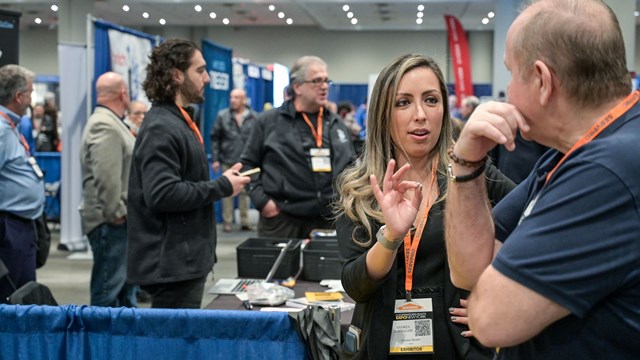When money is tight, consumers typically put away their credit cards and take stock—cutting out non-essentials, such as dining out and luxurious vacations—to make ends meet. Strapped homeowners will limit their funds to emergency repairs only, such as patching up a leaky pipe, and put off anything else that needs to be done until later. Those who live in an HOA might even take such drastic measures as not paying their monthly dues until things improve.
Unfortunately, in this economy, many homeowners are making the decision to do just that and it’s left many associations in a serious financial crunch. They simply don’t have enough money to complete some basic maintenance and improvement projects.
Tough Times, Tough Choices
According to a national survey conducted by Community Associations Institute (CAI), more than half of the nation’s estimated 310,000 community associations continue to struggle with financial issues associated with the mortgage foreclosure crisis and related economic downturn. Almost a half million properties received a foreclosure notice last year, according to real estate data firm RealtyTrac, Inc. and 45 percent of community managers say their client associations face "serious” problems as a result of the housing and economic downturn, while 9 percent describe the impact as "severe." The remainder say these issues are a nuisance or nonexistent.
For example, a recent article in the Daytona Beach News-Journal profiled the luxury Palmas de Mallorca condominium in Daytona Beach Shores, which was nearly shut down in 2008 and evacuated when the homeowner's association did not have $3,000 to fix a water pump that feeds the fire suppression sprinklers. What in the world would bring a high-end condo community to such a predicament? The answer was simple, but dire: half of the building's 12 units were empty and the remaining owners were not paying their assessments. Fortunately the problem was fixed—but it’s just one example of many more associations facing the same battle today.
“In this particular economic time in Florida, community associations are hampered by foreclosures and the board has to make hard choices about what they are going to pay for,” says Dennis J. Eisinger, Esq., an attorney and founding partner with the Hollywood law firm of Eisinger, Brown, Lewis, Frankel & Chaiet, P.A. “The last time this happened it took 14 years to come out of it.”
To compensate for a cash shortfall, the CAI study shows 38 percent have postponed plannedcapital improvement projects, 35 percent have reduced landscaping services, 31 percent have reduced contributions to their reserve accounts—funds that are set aside for major maintenance and repairs, 23 percent have borrowed from the association’s reserve account, 16 percent have levied special assessments, 12 percent are allowing residents to perform minor tasks in the community and 6 percent have borrowed from banks and other lenders.
What you don’t want to do is ignore something that you know is an issue because it may cause more problems down the road. “The board, on behalf of its residents, has a fiduciary responsibility to maintain the association,” says Robert L. Kaye, Esq. an attorney and managing partner of the firm Kaye & Bender, P.L., in Pompano Beach. “When the board has knowledge of a condition that needs attention and because of budget concerns puts it off and there is a failure, it can be considered negligence which is actionable.”
In addition to potential litigation, Eisinger says if the association didn’t repair something that was broken and it was obviously a responsibility of theirs, the association’s insurance coverage might be voided. “This fiduciary responsibility is very strong in Florida and you better know your responsibility,” he says.
William (Bill) Briggle of Macaw Properties, Inc. in Altamonte Springs says his responsibility is to his tenants as the manager of individually-owned units and he is responsible for collecting the rent to send to the owner. He makes sure to keep a small reserve for minor repairs and maintenance. “However, if we see what’s coming down the road is a problem, I’ll tell the owner that we’ll withhold the rent in a trust account until we replace whatever it is that needs to be fixed. In our units, safety always comes first for a particular tenant. There’s no postponing anything about safety, such as smoke alarms, door locks, and window locks.”
Assess It Now
An assessment might sound like the perfect solution—simply raise the money you need for projects by assessing the paying residents. In many cases, it is, but the CAI reports that even collecting assessments have become an issue today. According to the report, national assessment delinquency rates have more than doubled since 2005. Today, 65 percent of associations have delinquency rates exceeding 5 percent, up from just 19 percent of associations in 2005. More than 30 percent have delinquency rates exceeding 10 percent, and for one in 10—or close to 30,000 associations—the rate is more than 20 percent.
“Some associations are caught been a rock and a hard place because there was a time for loans for these things, but one criteria in granting the loans is the percentage of delinquencies,” says Kaye. “If they exceed 10 percent, they aren’t going to qualify and it seems better to assess and not have the long term loan. But if you assess you have some owners who were financially-strapped and making payments but on the fence, and now you’ve knocked them over.”
So if your association really is at a point where one project must be chosen over another, how do you decide? Those who have a list of things-to-do are prioritizing exactly what projects they have money to do and Eisinger cautions associations to prioritize wisely.
Safety First
“There’s nothing more important than life and safety,” says Eisinger. “Whatever the cost, you have to find one way or another to pay for that first.”
Eisinger also says that items that might lead to potential injury should go much higher on the list. “After that, water and electric, followed by insurance,” he says. “Some associations are going naked without insurance. Then their needs to be repairs to the common areas and keep landscaping and things like improvements at the bottom of the list, but you have to make sure you have enough money for insurance premiums.” It was reported that one such association in Oakland Park did just that and canceled a $90,000 annual premium for windstorm insurance on all of its 18 buildings—a potentially dangerous cost-cutting move.
Kaye says that a common item that typically doesn’t make the list, but should, is the roof. “Roofs are expensive to replace and many communities put it off as long as they can and they do patchwork. However, roof failures occur on a regular basis and can cause damage beyond the common elements.”
Another important item that shouldn’t be off your list of things to do is maintenance to protect the association from hurricane damage. Needless to say with its coastal location, wind and weather affects a lot of Florida homeowners and associations. To protect condo buildings, the building must be shuttered or protected. (For condominiums, Section 718.113(5), Florida Statutes requires that boards adopt hurricane shutter specifications for each building within the condominium. The specifications must include color, style etc.)
Patrick Hohman, a 23-year association president and author of Condos, Townhomes and Home Owner Associations: How to Make Your Investment Safer, says that the biggest lesson of the economic crisis is to always keep up with reserve contributions and repairs. “We hired an engineer to make a priority list of necessary repairs,” he says. “But there was good news. During the recession, for the last three years, on major projects, repair costs have been up to 40 percent below predictions. We also get the repair firms most senior and skilled workers, because often they are the core group of construction workers who are still working.”
Hohman balances high visibility curb appeal projects with necessary but more invisible infrastructure repairs, because he says, “all owners/residents can see the curb appeal projects. It’s always a balancing act, but it builds much goodwill with the owners and residents. They have to be able to see progress each year.” He also explains that by starting foreclosure procedures against delinquent owners, the owner owners—who were 10 to 40 days late—started to pay.
The bottom line is that with some creative planning and prioritizing—and perhaps a temporary case of tightening the belt—associations can potentially still survive even the toughest of times.
Lisa Iannucci is a freelance writer, author and a frequent contributor to The South Florida Cooperator.






Leave a Comment